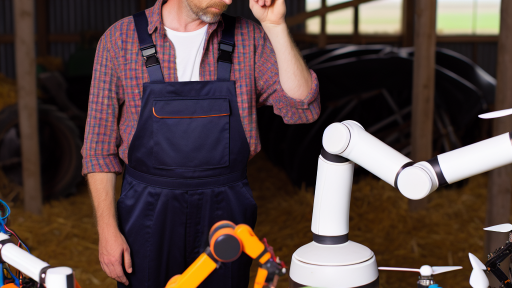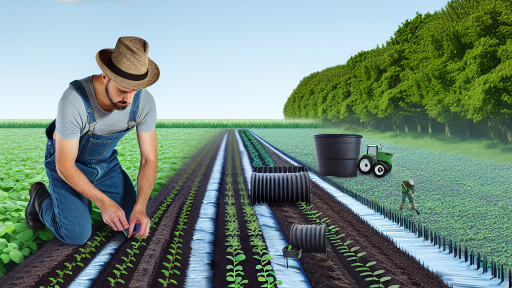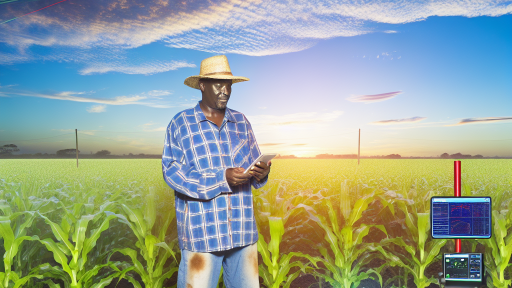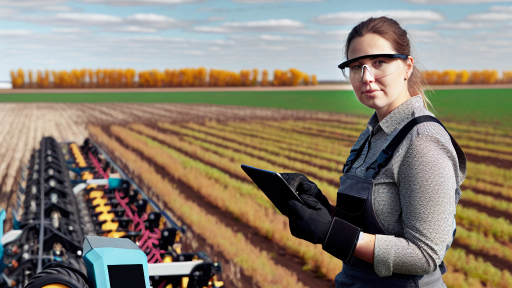Introduction to Precision Agriculture and Crop Monitoring
Precision agriculture revolutionizes crop management practices.
This approach utilizes technology to enhance agricultural efficiency.
Farmers rely on data collected from various sources.
This data includes soil moisture levels, weather conditions, and crop health.
Understanding Precision Agriculture
Precision agriculture incorporates advanced technologies.
Farmers use GPS, sensors, and drones to monitor their fields.
These tools provide real-time insights into crop conditions.
As a result, farmers make informed decisions about resource allocation.
This practice reduces waste and minimizes environmental impact.
Benefits of Crop Monitoring
Crop monitoring allows for timely interventions.
Farmers can detect issues such as pest infestations early.
This proactive approach improves crop yields and quality.
Monitoring helps optimize irrigation practices as well.
Consequently, this leads to better water management and conservation.
Technological Innovations in Monitoring
Recent innovations enhance the efficiency of crop monitoring.
Transform Your Agribusiness
Unlock your farm's potential with expert advice tailored to your needs. Get actionable steps that drive real results.
Get StartedFor instance, remote sensing technology provides aerial views of fields.
Drones equipped with cameras gather valuable visual data.
Moreover, satellite imagery can track crop health over time.
These technologies create comprehensive field maps for analysis.
Implementing Precision Agriculture
Farmers can adopt precision agriculture in several steps.
First, they must invest in the necessary technology.
Next, they should analyze the data collected to identify trends.
Cultivating partnerships with tech companies can also be beneficial.
Ultimately, integrating precision agriculture into practice boosts productivity.
Key Technologies Enhancing Crop Monitoring
Drones
Drones revolutionize crop monitoring with aerial imagery.
They provide valuable data on crop health and growth patterns.
Farmers can analyze large fields quickly using drones.
This technology reduces labor costs and increases efficiency.
Drones can also create 3D maps of agricultural land.
These maps help in identifying problem areas in fields.
Additionally, drones facilitate precision spraying of pesticides.
They deliver targeted applications to reduce chemical usage.
Sensors
Sensors play a vital role in modern agricultural practices.
They collect real-time data on soil moisture and temperature.
Farmers can monitor conditions that affect crop yield.
This information helps in making informed irrigation decisions.
Moreover, sensors can track nutrient levels in the soil.
They enable precise fertilization based on crop needs.
Some sensors even detect pest activity to promote early intervention.
Showcase Your Farming Business
Publish your professional farming services profile on our blog for a one-time fee of $200 and reach a dedicated audience of farmers and agribusiness owners.
Publish Your ProfileIncorporating sensors leads to higher efficiency and lower costs.
Internet of Things (IoT)
The IoT connects various devices to streamline farming operations.
Farmers can remotely monitor their crops using mobile applications.
This connectivity enhances data accessibility and analysis.
IoT systems can automate irrigation based on sensor data.
Automation reduces water waste and improves crop health.
Furthermore, IoT technology allows for predictive analysis.
Farmers can anticipate weather patterns to optimize planting schedules.
As a result, IoT fosters a proactive approach to farming.
Integrating Technologies for Comprehensive Solutions
Combining drones, sensors, and IoT creates robust monitoring systems.
This integration enhances data accuracy and insights.
A holistic approach to crop monitoring increases profitability.
Farmers can make better decisions based on comprehensive data.
The synergy of these technologies promotes sustainable practices.
Moreover, it paves the way for innovation in agriculture.
As technology advances, farmers will adapt and thrive.
The Role of Data Analytics in Precision Agriculture
Understanding Data Analytics
Data analytics is transforming the agricultural landscape.
It enables farmers to make informed decisions.
With the power of data, precision agriculture optimizes crop yields.
Farmers can identify patterns and trends in their fields.
This analysis helps them allocate resources efficiently.
Benefits of Data Analytics in Agriculture
Data analytics provides numerous benefits to farmers.
- It enhances crop monitoring and health assessment.
- Farmers can predict potential yields more accurately.
- This technology reduces waste and lowers costs.
- It aids in identifying optimal planting and harvest times.
Moreover, data analytics improves the application of fertilizers.
This minimizes environmental impact while maximizing productivity.
Implementing Data Analytics Tools
Various tools support the implementation of data analytics.
Remote sensing technology offers valuable insights.
Farmers utilize satellite imagery to monitor crop health.
Additionally, drones provide on-the-ground data collection.
These tools facilitate real-time monitoring of agricultural practices.
Case Studies of Data-Driven Success
Several farms illustrate the success of data-driven strategies.
The Williams Family Farm increased yields by 30% through analytics.
They used soil sensors to optimize watering schedules.
Similarly, Green Valley Farms improved resource management.
By analyzing data, they achieved significant cost savings.
Future Trends in Data Analytics
The future of data analytics in agriculture looks promising.
Artificial intelligence is poised to further enhance capabilities.
Machine learning can refine predictions and outcomes.
Farmers will increasingly rely on integrated analytics platforms.
This will streamline operations and improve efficiency.
You Might Also Like: Sustainable Energy Planning for Future-Focused Farms
Showcase Your Farming Business
Publish your professional farming services profile on our blog for a one-time fee of $200 and reach a dedicated audience of farmers and agribusiness owners.
Publish Your ProfileBenefits of Real-Time Monitoring for Crop Health
Improved Decision Making
Real-time monitoring enhances decision-making processes for farmers.
It provides vital data on crop conditions instantly.
This information helps in identifying issues before they escalate.
Consequently, farmers can optimize their interventions effectively.
Increased Crop Yields
Timely monitoring directly contributes to higher crop yields.
Farmers can apply resources just when they are needed.
This precision reduces waste and increases efficiency.
The result is healthier crops and better harvests.
Cost Efficiency
Real-time monitoring helps in reducing operational costs.
Farmers can avoid over-application of water and fertilizers.
This efficiency leads to lower resource costs.
Moreover, savings in inputs translate to higher profit margins.
Enhanced Pest and Disease Management
Early detection of pests and diseases is crucial for managing crops.
Real-time data allows for immediate responses to threats.
Farmers can implement targeted treatment strategies.
This minimizes crop damage and maximizes yield potential.
Resource Optimization
Monitoring enables farmers to use resources more wisely.
Water, nutrients, and chemicals can be allocated more effectively.
This sustainable approach conserves resources and protects the environment.
As a result, it promotes long-term productivity for farms.
Data-Driven Insights
Real-time monitoring systems generate substantial data.
Farmers can analyze trends and patterns over time.
These insights support better planning for future crops.
Additionally, they help in adapting to changing environmental conditions.
You Might Also Like: Robotic Innovations Boosting Farm Efficiency
Case Studies: Successful Implementation of Precision Agriculture Techniques
Introduction to Case Studies
This section explores various successful implementations.
We will analyze real-world examples of precision agriculture.
These case studies demonstrate the effectiveness of modern techniques.
Case Study: Green Valley Farms
Green Valley Farms adopted drone technology for crop monitoring.
They achieved significant yield improvement within one season.
The drones provided detailed aerial imagery for farmers.
This allows for timely and informed decision-making.
Actions Taken
The farm utilized multispectral imaging to assess crop health.
This technology identified areas needing attention quickly.
Subsequently, they adjusted their irrigation and fertilization strategies.
This approach led to more efficient resource use overall.
Results Achieved
Green Valley Farms reported a 25% increase in corn yield.
Overall costs decreased due to optimized inputs and better management.
They also reduced water usage by 30% through precise irrigation.
Case Study: Sunshine Orchards
Sunshine Orchards implemented soil sensors for monitoring purposes.
Showcase Your Farming Business
Publish your professional farming services profile on our blog for a one-time fee of $200 and reach a dedicated audience of farmers and agribusiness owners.
Publish Your ProfileThese sensors provided real-time data on moisture and nutrients.
This information facilitated effective resource allocation.
Actions Taken
The farm adjusted their irrigation schedules based on sensor data.
They also implemented variable rate fertilization techniques.
Consequently, they enhanced soil health and crop productivity.
Results Achieved
Sunshine Orchards experienced a 15% increase in fruit quality.
They reduced nitrogen fertilizer costs by 20% annually.
Environmental impacts were minimized through optimized practices.
Case Study: River Bend Ranch
River Bend Ranch focused on integrated pest management using precision tools.
They utilized mobile apps for pest monitoring and identification.
This helped them combat infestations quickly and effectively.
Actions Taken
The ranch trained staff to use apps for real-time pest data.
They also implemented targeted pesticide applications.
This strategy reduced pesticide use significantly.
Results Achieved
River Bend Ranch reported a 40% decrease in pest-related losses.
They improved overall crop quality due to lower pesticide exposure.
Additionally, the farm gained recognition for sustainable practices.
Implications for Future Practices
These case studies highlight the potential of precision agriculture.
They pave the way for broader adoption in the industry.
Farmers can achieve economic and environmental advantages.
Thus, innovative techniques sustain agricultural productivity.
Explore Further: Sustainable Vertical Farming Operations for Modern Farms
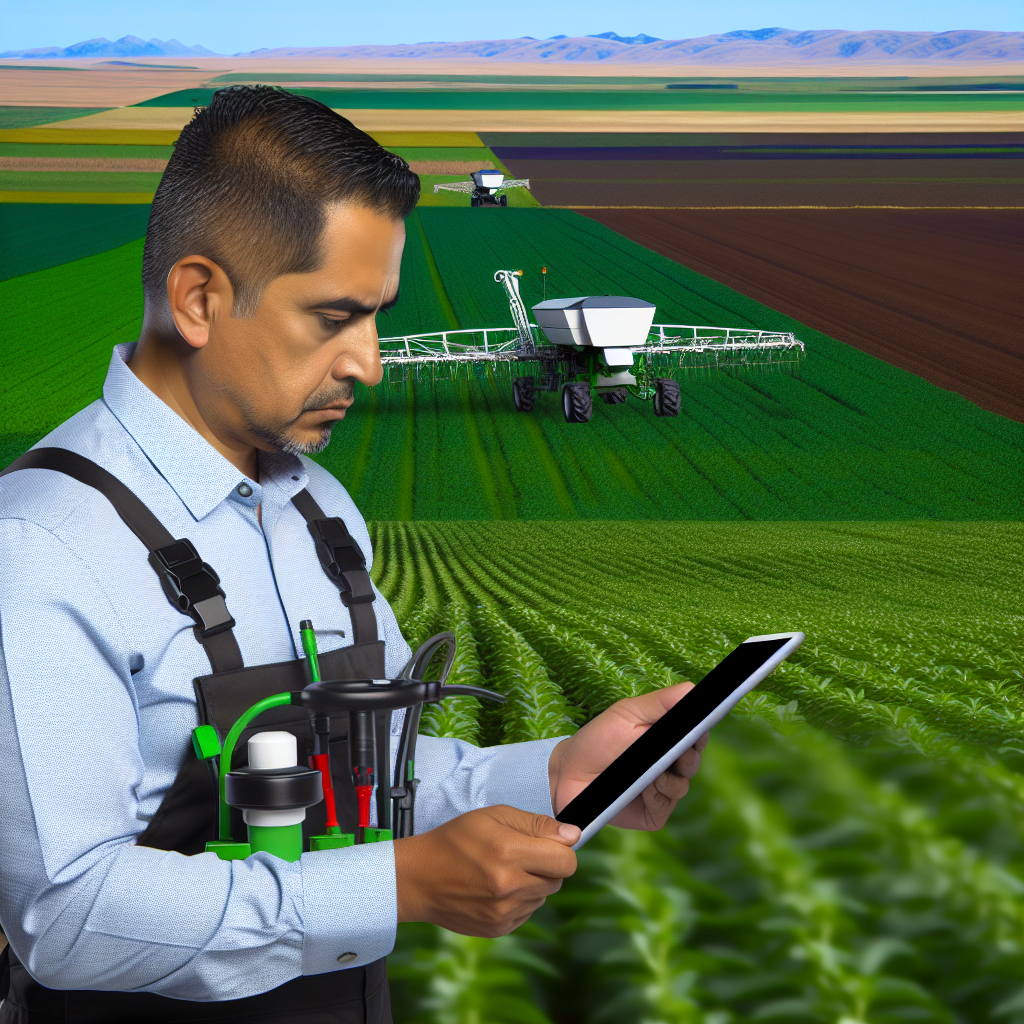
Challenges and Limitations of Precision Crop Monitoring
High Initial Costs
Investing in precision agriculture requires significant upfront costs.
Farmers must purchase specialized equipment and technology.
Additionally, software and data management systems also add expenses.
Data Management Complexity
Handling large volumes of data presents a challenge.
Farmers need expertise in data analysis to make informed decisions.
Therefore, improper data handling may lead to poor outcomes.
Technology Dependence
Precision crop monitoring heavily relies on technology.
Any technology failure can disrupt the entire monitoring process.
Moreover, farmers may face difficulties in troubleshooting issues.
Resistance to Adoption
Some farmers may resist adopting new practices and technologies.
Tradition often clashes with modern farming approaches.
Furthermore, a lack of understanding may hinder adaptation.
Environmental Limitations
Environmental factors can limit the effectiveness of precision agriculture.
For instance, weather conditions can impact the accuracy of data collected.
Additionally, soil variability may reduce the applicability of findings.
Regulatory Hurdles
Compliance with regulations poses a challenge for farmers.
Regulatory requirements may restrict the use of certain technologies.
As a result, farmers may face limitations in data usage.
Showcase Your Farming Business
Publish your professional farming services profile on our blog for a one-time fee of $200 and reach a dedicated audience of farmers and agribusiness owners.
Publish Your ProfileYou Might Also Like: Comparing Traditional and Smart Irrigation Methods
Future Trends in Precision Agriculture and Crop Management
Advancements in Technology
Technology is transforming precision agriculture rapidly.
Farmers now leverage drones for aerial data collection.
Additionally, satellite imagery offers comprehensive insights into crop health.
These advancements enable more accurate monitoring of soil conditions.
Moreover, IoT devices help track weather patterns and soil moisture levels.
Data-Driven Decision Making
Farmers increasingly rely on data analytics for decision-making.
This shift enhances productivity and reduces operational costs.
Data helps in predicting crop yield and identifying potential issues early.
Furthermore, it supports tailored interventions based on specific crop needs.
Sustainability Initiatives
Precision agriculture fosters sustainable farming practices.
By reducing resource waste, it contributes to environmental conservation.
Methods like variable rate applications optimize inputs like water and fertilizers.
Consequently, farmers can lower their ecological footprint significantly.
Integration of Artificial Intelligence
Artificial intelligence is gaining traction in crop management.
AI models analyze vast amounts of agricultural data quickly.
This analysis aids in forecasting pest infestations and disease outbreaks.
Furthermore, AI assists in automating farm operations efficiently.
Collaboration and Knowledge Sharing
Farmers are increasingly forming cooperatives for knowledge sharing.
This collaboration enhances the adoption of innovative practices.
Moreover, partnerships with tech companies drive new solutions.
Such initiatives promote continuous learning and adaptation.
Integration of AI and Machine Learning in Crop Monitoring Systems
Technological Advances in Agriculture
Recent developments in technology enhance agricultural practices significantly.
AI and machine learning empower farmers with better data analysis capabilities.
These technologies allow for real-time monitoring of crop conditions.
Advanced sensors collect valuable data about soil moisture and nutrient levels.
Data-Driven Decision Making
Farmers rely on data to make informed decisions about crop management.
AI algorithms analyze patterns in large datasets to predict crop performance.
Consequently, farmers can use these insights to optimize inputs and resources.
This leads to improved yields and reduced waste in agricultural practices.
Enhanced Pest and Disease Detection
Machine learning algorithms help identify pests and diseases early.
Images captured by drones and sensors undergo analysis by AI systems.
As a result, farmers receive alerts about potential threats to their crops.
This early detection allows for timely intervention and minimized crop loss.
Precision Irrigation Systems
AI-driven irrigation systems adjust water delivery based on real-time data.
These systems monitor weather forecasts and soil moisture levels closely.
In turn, farmers conserve water and enhance crop health through precision irrigation.
This method not only saves resources but also supports sustainable farming practices.
Improving Overall Farm Management
AI solutions streamline various farm operations beyond crop monitoring.
Farmers benefit from automated reporting and management tools.
Showcase Your Farming Business
Publish your professional farming services profile on our blog for a one-time fee of $200 and reach a dedicated audience of farmers and agribusiness owners.
Publish Your ProfileThis integration reduces human errors and enhances operational efficiency.
Ultimately, it transforms traditional farming into a more productive and modern approach.
Additional Resources
Precision Agriculture: Benefits and Challenges for Technology …
USDA Science and Research Strategy, 2023-2026: Cultivating …

